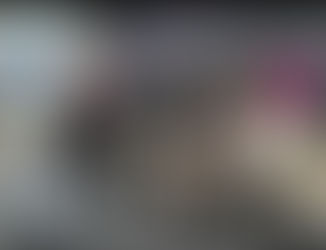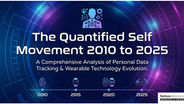Remote photoplethysmography (rPPG): emerging HealthTech sub sector is 'one to watch in 2024 and 2025
- Lloyd Price
- May 19, 2024
- 5 min read

Exec Summary:
Remote photoplethysmography (rPPG) is a way of measuring vital signs, like your heart rate, but without touching you! It uses a camera to capture tiny changes in skin colour caused by blood flow.
Here's a closer look at how it works:
Light and Blood Flow: rPPG uses a regular camera and ambient light. As your heart pumps, blood volume in your skin changes slightly.
Colour Shifts: These blood volume changes cause subtle variations in how much red, green, and blue light gets reflected by your skin.
Camera Captures: The camera picks up on these colour changes over time.
Signal Processing: Software analyses the video to extract a signal that corresponds to your pulse. This extracted signal is the rPPG signal.
Why is it exciting?
rPPG is exciting because it's contactless. Imagine being able to monitor someone's heart rate from a distance, like during a video call with a doctor. It also has the potential to be integrated into wearables or even cameras for continuous health monitoring.
What are the limitations?
While promising, rPPG is still under development. Here are some limitations to consider:
Accuracy: Movement, lighting conditions, and skin tone can affect how well rPPG measures your pulse.
Early Stage: The technology is still being refined, and its applications in healthcare are being explored.
Overall, rPPG is a developing health tech with promise for contactless vital sign monitoring. As research progresses, it has the potential to become a valuable tool in healthcare.
The Promise of rPPG
rPPG uses light sensors to remotely measure vital signs like heart rate and blood oxygenation. This has exciting possibilities for health monitoring, especially for:
Remote patient care: Imagine continuously monitoring someone's heart health from the comfort of their home.
Wellness monitoring: rPPG could be integrated into wearables to track fitness and well-being.
Early detection of health issues: rPPG data could help identify potential problems early on.
Hype vs. Reality
While rPPG has promise, there are challenges to address:
Accuracy: rPPG measurements can be affected by factors like movement and skin tone.
Data security: Sensitive health data needs robust security measures.
Limited applications: rPPG may not be suitable for diagnosing complex medical conditions.
So, is it hype?
rPPG is a developing technology with real potential. It's not a cure-all, but it could be a valuable tool in healthcare. As research and development continue, we can expect rPPG to become more accurate, reliable, and secure.
Mergers, Acquisitions, Growth and Strategy for Healthcare Technology companies
HealthTech M&A - Buy Side, Sell Side, Growth & Strategy services for companies in Europe, Middle East and Africa. Visit www.nelsonadvisors.co.uk
HealthTech M&A Newsletter from Nelson Advisors - HealthTech, Health IT, Digital Health Insights and Analysis. Subscribe Today! https://lnkd.in/e5hTp_xb
Healthcare Technology Buy Side, Sell Side, Growth & Strategy services for Founders, Owners and Investors. Email lloyd@nelsonadvisors.co.uk
Healthcare Technology Thought Leadership from Nelson Advisors – Market Insights, Analysis & Predictions. Visit https://lnkd.in/ezyUh5i

History of Remote photoplethysmography (rPPG)
Remote photoplethysmography (rPPG) is a relatively new technology, but it builds on the foundation of a well-established technique: traditional photoplethysmography (PPG). Here's a look at its development:
The Roots: Traditional PPG (1930s)
The story starts with Hertzman and Spealman in the 1930s. They discovered that changes in blood volume in the skin cause fluctuations in light passing through or reflecting off the surface [1]. This led to the development of the photoplethysmograph by Hertzman in 1938, which could measure heart rate by detecting these blood flow variations.
The Birth of rPPG (2000s)
The concept of rPPG emerged much later. The first demonstration came around 2005, using a thermal camera to record facial data and extract pulse information. This marked the beginning of exploring how to measure vital signs remotely, without physical contact.
Advancements and Future (2000s-Present)
Since then, researchers have been refining rPPG techniques. Here are some key developments:
Light Source: While thermal cameras were used initially, researchers have transitioned to using regular digital cameras with ambient light.
Signal Processing Techniques: Sophisticated algorithms are being developed to extract the rPPG signal from video recordings, accounting for factors like movement and lighting variations.
Applications: The focus has shifted towards exploring practical applications of rPPG in healthcare, such as remote patient monitoring, wearables for fitness tracking, and early detection of health issues.

Future of Remote photoplethysmography (rPPG)
The future of Remote Photoplethysmography (rPPG) is quite promising, with potential for significant growth and integration into various aspects of healthcare and wellness. Here are some exciting possibilities:
Enhanced Accuracy and Functionality:
Advancements in algorithms and machine learning will likely lead to improved accuracy in extracting vital signs like heart rate, respiration rate, and even blood oxygen levels.
rPPG technology might expand to track additional health metrics like stress levels, blood pressure variations, and even emotional states.
Improved User Experience and Accessibility:
Expect seamless integration of rPPG sensors into everyday devices like smartphones, smartwatches, and even clothing, making health monitoring more convenient and unobtrusive.
This ease of use could lead to wider adoption by people of all ages and health backgrounds, promoting preventative healthcare and self-monitoring.
Telehealth and Remote Patient Monitoring:
rPPG's contactless nature makes it ideal for telehealth consultations and remote patient monitoring. This could improve access to healthcare, especially in underserved areas or for patients with mobility limitations.
Real-time health data from rPPG could allow healthcare providers to remotely monitor chronic conditions and intervene earlier if needed.
Mental Health Monitoring and Applications:
rPPG's potential to track stress levels and physiological changes associated with emotions could pave the way for mental health monitoring tools.
This could be used for early detection of mental health issues or to track the effectiveness of treatment plans.
Beyond Healthcare:
Applications of rPPG might extend beyond healthcare.
In fitness and wellness, rPPG could provide real-time feedback during exercise routines to optimize performance.
In the automotive industry, it could be used to monitor driver drowsiness or stress levels.
Challenges to Address:
Despite its promise, rPPG technology faces some challenges:
Accuracy under varied conditions: Motion artifacts, lighting changes, and skin pigmentation can affect rPPG readings. Future advancements need to address these factors.
Data security and privacy: As rPPG collects personal health data, robust security measures are crucial to ensure user privacy.
Regulatory landscape: Regulatory frameworks for rPPG-based medical devices need to be established to ensure their safety and efficacy.
Overall, the future of rPPG is bright. With ongoing research and development, this technology has the potential to revolutionise healthcare and wellness monitoring, promoting a future of proactive health management.

Mergers, Acquisitions, Growth and Strategy for Healthcare Technology companies
HealthTech M&A - Buy Side, Sell Side, Growth & Strategy services for companies in Europe, Middle East and Africa. Visit www.nelsonadvisors.co.uk
HealthTech M&A Newsletter from Nelson Advisors - HealthTech, Health IT, Digital Health Insights and Analysis. Subscribe Today! https://lnkd.in/e5hTp_xb
Healthcare Technology Buy Side, Sell Side, Growth & Strategy services for Founders, Owners and Investors. Email lloyd@nelsonadvisors.co.uk
Healthcare Technology Thought Leadership from Nelson Advisors – Market Insights, Analysis & Predictions. Visit https://lnkd.in/ezyUh5i



















































Comments